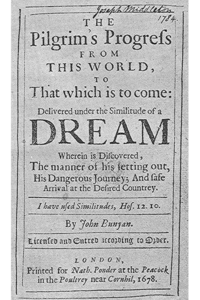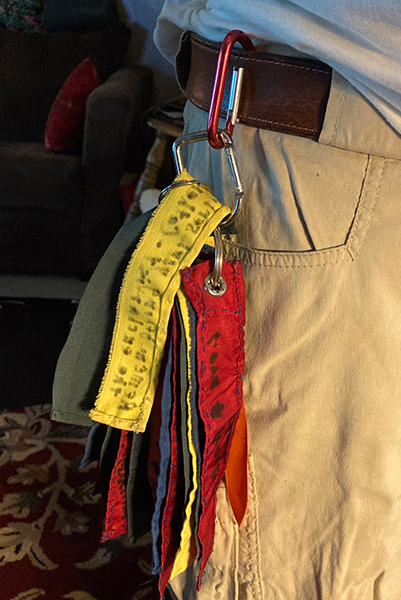People talk about “Finding my Calling.” It takes paying attention and deep listening to hear any Call, and then follow the Call into action. A Call to “Go on Pilgrimage” is a very special call, usually with a spiritual motivation. Let’s explore on multiple layers the pilgrimages in Chaucer’s Canterbury Tales, Bunyan’s Pilgrim’s Progress, a modern pilgrimage on the Camino de Santiago, and the pilgrimage you were Called to undertake in this lifetime.

William Blake, The Canterbury Pilgrims
In the Hero/Heroine’s Journey circuit for this year we are at the second station, the Call. People talk about “Finding my Calling”. It takes paying attention and deep listening to hear any Call, and then take action. For millennia, and now, people listen when called to a pilgrimage. Although every culture has stories of pilgrimages, I’m choosing two Western and Christian texts: Chaucer’s Canterbury Tales and Bunyan’s Pilgrim’s Progress. I’m including a couple of modern pilgrimage examples.
I believe every Hero/Heroine’s journey can be described as a pilgrimage. I hope you will be thinking about the pilgrimage you have undertaken in this lifetime.
Chaucer and Bunyan: Stories of Pilgrimages
“Once upon a time….” the story begins, and we enter Mythic Time. Inside the story Time is both no time and all time. The characters proceed in a somewhat linear fashion along a “story line”, but at any given instant the story leaps to another level and doesn’t “make sense” in a practical way. That leap is a clue that this story is happening in multiple realms. What is useful in ordinary time is often unnecessary or even a hindrance where the story is happening.
Canterbury Tales

Geoffrey Chaucer, NYPL Digital Collection
(1342 – 1400, England) Geoffrey Chaucer’s Canterbury Tales are about a motley crew of medieval people from various ranks, crafts and goodness who are on pilgrimage to Canterbury, the cathedral and the town. These are the characters who travel to Canterbury: Harry Bailly (the Host of the Inn), Carpenter, Chaucer, Clerk, Cook, Dyer, Friar, Franklin, Haberdasher, Knight & Squire, Manciple, Merchant, Miller, Monk, Nun, Parson, Physician, Plowman, Prioress, Priests (3), Reeve, Sergeant of the Law, Shipman, Summoner, Tapestry Specialist, Weaver, Wife of Bath, Yeoman. The crew gathers at an Inn, and the Host of the Inn proposes that they all travel together to Canterbury. His idea is to tell stories to entertain each other on the journey. Each tale is unique to the teller, and sometimes tell a joke, teach a moral, or make a point. The Miller’s Tale is lusty. The Parson’s amazing and useful sermon on the Seven Deadly Sins and Seven Quickening Cures I charted for you here on my website.
The Pilgrimage provides the frame for the tales, and the wisdom. In the Prologue the characters often tell their Call to pilgrimage; each character’s call differs in focus and reflects their personality. Here are the first two. Just read the Middle English aloud rhythmically and it will fall from your mouth perfectly.
- A Knyght – he loved chivalrie, truth, honor, freedom and curtesy.After listing his battles and travels: He was a verray, parfit, gentil knyght. Call: For he was late y-come from his viage, And wente for to doon his pilgrymage. (I wish our soldiers knew to go on pilgrimage when they return from battles. And maybe we don’t have to be soldiers to have been in battle.)
- With hym ther was his sone, a yong Squiér, A lovyere and a lusty bacheler…Call: In hope to stonden in his lady grace.
We go on to meet some holy and some less holy folk who are on the journey for holy and non-holy reasons, e.g., to meet a man to marry, to make money from the other pilgrims… There are a vast variety of Calls.

The Pilgrim’s Progress: From this World to That which is to Come, John Bunyan, 1678
Pilgrim’s Progress
(1628 – 1688) John Bunyan’s Pilgrim’s Progress is an allegory (more about that below), about a man named Christian whose journey is from the City of Destruction to the Celestial City. He meets other characters on the way, both helpful and not. He travels through terrain like the Slough of Despond, Hill of Difficulty, Palace Beautiful, Valleys of Humiliation and of the Shadow of Death, town of Vanity, Doubting Castle with the Giant Despair. The book has never been out of print and is translated into over 200 languages. It is theological but fiction, as are Chaucer’s writings, Aesop’s fables, Jesus’ parables, Fairy Stories, and Nasrudin the Trickster jokes. The lesson is taught through Story.
Assigned Reading
You may not have read either of these books. You may have been assigned Lord of the Flies instead. It’s the story of some boys who are shipwrecked on an island. In the material world the real boys in the real incident helped each other to survive. I’ve attached the article here. The novel author converted the story into a very different and ugly one. Too many teens are required to read it, form an ungenerous view of human behavior and feel despair.
I follow Alexandra Hudson on her Civic Renaissance blog.
On the fourth of May she posted about leisure: “Is leisure the secret of civilization?” She describes her personal life as being overly stressed for various reasons and then says:
Last night, for instance, I decided to take my own advice and try to rejuvenate my weakened soul by using my leisure time in a restorative way. I took up an antique, 1890 edition of John Bunyan’s Pilgrim’s Progress, a story I was raised on, for solace. It was my grandmother’s favorite book—and one of the few that was easily accessible and not hidden away in boxes. It was a comfort to return to a story of my childhood, and it offered me a much-needed reprieve from the day to day grind. In short, I’m glad I chose to make time for leisure in my life despite the many pressures of my life right now.
What if we and our children were assigned to read Pilgrim’s Progress instead of Lord of the Flies? Or any other book with the message “You and your companions on the journey will survive and win through.”
A story is a lesson that our ancestors went on pilgrimage to learn. It is a guide for us, their descendents. Perhaps they hoped to save us from having to wrestle or, more likely, to let us know as we are wrestling what they did to win through.

Clootie Tree, Kildare, Photo Credit: Sheila, 1988, CC BY-SA 4.0
A Story of a Pilgrimage Today
A pilgrim may go to a well or other holy place, pray, and hang a strip of cloth, a clootie, on a nearby tree, where it continues sending the prayer as it moves in the breezes. Tibetan prayers flags are similar. A friend of mine was called on pilgrimage to walk the Camino de Santiago (Way of St. James). He had retired from being an important lawyer, and had lost his greatly loved wife of many years. Walking, in his 80’s, with Parkinson’s, mourning his wife, he thought perhaps he might complete his life’s journey by the end of the walk. But, he says, “God had more for me to do in this life”. He is currently helping a traditional black Episcopalian church to establish the Pauli Murray Social Justice Coalition Center focusing on racial reconciliation and LGBTQA+ equality.
Walking along the Camino my friend carried a key ring of clooties-from church parishioners. He could pray as he walked, fingering the cloths on the ring at his belt. He says:
I ended my pilgrimage in Santiago Spain after walking 300 miles. I would say after about 200 miles into my journey with God I asked him, as I stood alone on the trail, that he had told me in 2013 that he wanted me to have the heart of Christ, but I still did not have it. So I asked him to give me this heart. I could not do it without his help. In that moment he filled my heart with the love of Christ. This was one of the most amazing experiences in my life.
A day later while walking on the Camino, standing alone, God spoke to me and told me to say these words: “I am love.” If you had seen me then you would have thought I was crazy. I said these words out loud. No one was there, so I just started saying them out loud to the trees, to the sky and more. I was so happy!
So when I had finished the pilgrimage I had gone through a dramatic change. Also, please know that once you have have walked the Camino it is never finished.

Camino Prayer Ribbons, Photo Credit: Nick Pijoan
This story of one person’s transformation while on pilgrimage gives us a vibrant example of what might happen between the Call to pilgrimage and the Return to home afterwards. A pilgrimage is a journey of Spirit, but often expressed through the body.
“My belief is in the blood and flesh being wiser than the intellect. The body-consciousness is where life bubbles up in us. It is how we know that we are alive, alive to the very depths of our souls and in touch somewhere with the vivid reaches of the cosmos.”
—D. H. Lawrence
A Pilgrimage through the Seven Layers of Story
I think I was taught this by my senior professor for my MA thesis on Free Will in Chaucer’s Canterbury Tales. But it might have been Robert Bly quoting someone, or even Joseph Campbell. I didn’t find an author when I did a little research; did find an interesting thread on the “seven layers of the metaverse”. If you know who or where the seven layers presented here come from, let us all know in the comments and I’ll update the blog.
Layer One: Physical/Literal:
This is the sensate truth, the situation: the protagonist is the third child of a farmer or merchant, has no apparent future, so receives a blessing (or not) to go forth on pilgrimage to find a new way in the world. In our Hero/Heroine’s Wheel this is the Home the pilgrim is leaving behind.
Layer Two: Historical Layer
The story comes from or is placed in a time in history. When the great Russian witch Baba Yaga gives Vasalisa the present of a steel needle, the detail “steel” tells us this story is from the dawn of the Iron Age, when most needles are bone or wood. Explore this story in the Russian Fairy Tales or read my play Waiting for Baba Yaga. Chaucer is medieval, Bunyan is Puritan. We are a specific generation named in some cases by a letter (X, Y) or phrase (Boomer). We are born into an era of time that influences our pilgrimage.
Our personal pilgrimage has a historical layer as well; after the death of a spouse and retirement is our example of a specific period of time. One of my pilgrimages was being Called to Iona, an island in Scotland where Columba went after being exiled from Ireland. My Call was both to Columba and the island’s history and to my transformational discovery that Celtic Christianity was alive and well in me.
Layer Three: Exegetical Layer
Don’t be put off by the word – it’s fun to say out loud. This is the teaching, the moral layer. An example is the main character, by being kind to the stranger or saving the creature that is trapped – by being Good – gains information, a gift, or even helpers on the Pilgrimage. Some stories stop here, having accomplished their purpose; most of Aesop’s Fables are an example. And sometimes “learning our lesson” is enough for a particular journey.
Layer Four: Symbolic Layer
In the story certain symbols are used – colors, plants, what type of animal or bird befriends, what kinds of tasks (sorting seeds = learning discrimination, the ability to know what is alive or dead). The more familiar the symbol, the more the story operates on a very different level than the first three. A personal example is that every time I am in a transformation process (e.g., newly married, new child, new work, new place to live) I lose my wallet with my personal ID’s in it. It has consistently been returned to me by someone who finds it, or I find it the moment I’ve settled in the new self expression (e.g., unpacking the final box). This is such a consistent symbolic process that it is a family joke: “Lost your wallet yet?” I’ve started paying strict attention, so last time I lost the keys to my old house (plus car, mother’s house, etc.) – the keys to my old life. Some I replaced.
Layer Five: Allegorical Layer
Here we see that the protagonist is Every Soul, that the things that are happening (e.g., the Slough of Despond) happen to all of us, all the time. The story is more than a moral lesson now; it is a Universal Truth being revealed in an encapsulated form. Pilgrim’s Progress is taught as an allegory. For seven years, while working with high powered clients solving difficult problems for their corporation, my dreams from time to time would feature turtles. The Heroine in my short story Turtle Dreams details these dreams as she explores from the first (“I am the Ancient Turtle”) to the last when she marries White Turtle. Although the story is based on my dreams, the pilgrimage the story’s Heroine takes is her own.
Layer Six: Metaphorical Layer
This layer is where a problem is being overcome by the Hero/Heroine by their learning or action – some manner of curse is lifted. The whole story is a metaphor about the curse, and how it must be handled to be resolved. The Canterbury Tales is a metaphor: the Host at the Inn proposes we travel together to the holiest place, and entertain and edify each other as we travel along. In the Camino pilgrimage above our Hero walks it literally, and on all the other layers, but at this layer the whole pilgrimage is a metaphor for his life. One clue to being inside the metaphorical layer is that one’s sense of time seems weird, out of joint, or even non-existent.
Layer Seven: Anagogical (Mystical) Layer
Anagogical is another word that is fun to say aloud. On this layer the pilgrim can’t reason the final revelation. The pilgrim must take a leap, a poetic, mystical leap of faith, into a revelation that the pilgrimage is about the infinite. In the Camino story when the pilgrim says “I didn’t know how, help me” (to have the heart of Christ) the Infinite can enter. In the last Turtle dream to marry White Turtle is to marry the Mystery.

Slough, Photo Credit: Alex Simpson
A Pilgrim in Narnia and the Slough of Despond
I follow Brenton Dickieson’s blog A Pilgrim in Narnia, with information mostly on C.S. Lewis, J.R.R. Tolkein, and related authors. As I was working on this blog Brenton posted a marvelous blog on the word “Slough.”
Not far into his pilgrimage Christian (the Hero) reaches the Slough of Despond, a place where many of us pilgrims today may find ourselves.
We had a “slough” (sloo) on an uncle’s ranch when I was a girl. Its banks were sloped enough the tractor driver went to the bridge if crossing to the other side. At the bottom it was muddy, even in the driest season, and smelled of decaying plants. We learned quickly not to go into it because, like Christian, our hero, we would get stuck in the mud and need help to get out.
The Slough of Despond might be confused or even become a Nigredo, the point of dissolution and reformation, the transforming place of the Hero/Heroine’s Journey. There is a natural Slough of Despond that occurs at the end of a vacation, a big project, an artistic production. Or once the multiple holiday preparations are in place, or afterwards when the elements need to be put away.

Sometimes the Soul: Two Novellas of Sicily, Gioia Timpanelli
In Gioia Timpanelli’s Sometimes the Soul two very different women pass through a serious Slough of Despond and emerge transformed. They both were called to a transformation, wait in solitude and stillness until a shift occurs. They emerge with a new focus for their lives’ pilgrimages.
This Slough is a normal process, calling for a soul to accept slowing down, coming to full STOP, and taking a Sabbath. Even God “rested” on the seventh day. If the Slough of Despond goes on for a long time (many weeks, two years of Covid) it may be important to see a doctor because the soul may be trapped in the mud of the Slough, and has become a more serious medical event. It is the character Help that gets Christian out of the slough and back on his pilgrimage.
In The Wounded Healer: Ministry in Contemporary Society Henri J. M. Nouwen says:
For all ministers are called to recognize the sufferings of their time in their own hearts, and make to that recognition the starting point of their service. Whether we try to enter into a dislocated world, relate to a convulsive generation, or speak to a dying person, our service will not be perceived as authentic unless it comes from a heart wounded by the suffering about which we speak. Thus, nothing can be written about ministry without a deeper understanding of the ways in which ministers can make their own wounds available as a source of healing.
As we make our pilgrimage through life, it is important to understand our Sloughs of Despond, for one example, are blessings we might offer to others. We survived them, we know the terrain, and the fact that we did so offers hope to another pilgrim.
In the game of Quest my eldest grandson is Guiding our family through, my husband chose the role of Doctor. When the rest of us engage in battle, it is quite amazing how afterwards the Doctor can heal our Hit Points and Restore to Health. Let’s discover how, on our pilgrimage, Healing can be offered to, and received from, our companions.
Living our Lives with Awareness
Living our lives with an awareness of the seven levels of meaning helps orient us on our Hero/Heroine’s Journeys. The difficult times are critical – without them there is no story, If we live our lives without understanding we are pilgrims, linear time passes, the seasons cycle, and we go on and on, doing our best, never deeply understanding there are other layers of time, consciousness, and revelation.
We may not realize that we are the protagonist of our story. Our spirit accepted a Call to come here, our body knows our spirit, together they are our “I”. Joseph Campbell is famous for the phrase “Follow Your Bliss”. Bliss is felt in the body, known in the mind, when our heart’s longing leads us to the journeys we are to take. When we are living our story, following our bliss, awake to the layers of possibility, doors open where we saw no door before, and allies arrive to help us when we need them.
(From the Canterbury Tales – Please read it aloud)
Whan that Aprille with his shoures soote,
The droghte of March hath perced to the roote,
And bathed every veyne in switch liquor
Of which virtu engendered is the flour….
So priketh hem Nature in hir corages, (hearts)
Thanne longen folk to goon on pilgrimages….
And specially, from every shires ende
Of Engelond, to Caunterbury they wende,
The hooly blissful martir for to seke,
That hem hath holpen whan that they were seek.
Thanks and Comments
Thank you for reading this blog. If you would like to comment, it helps encourage my heart as well as my placement in the algorithms that allow other people to find it. The comment box is at the end of the blog page. As we share the journey to our individual Canterburys, let us tell each other our stories as we travel.





Just now I have on my lap the book 52 Ways To Walk by Annabel Streets. The story I’m reading is “Walk Like A Pilgrim”. I stopped to look up a reference, saw your email and opened your blog. What a coincidence (?) that you shared so much depth about Pilgrimages! And, I’m heading to CO for the first trip I’m taking since 2019. A pilgrimage in its own way, thanks so much, Lola for sharing all of this!
I haven’t read that book – I’m glad the blog and the book both arrived in time for your Colorado pilgrimage. I am also going (end of June/early July) but hadn’t thought of it as a pilgrimage until your comment. It is one, and it means a lot to reframe it.
Thank you for this thought-provoking posting, Lola. I am at a time when I’m find myself rather careening from one seemingly significant event to another, the latest being a snowstorm last night which has left so many of my trees broken and blocking the way. Perhaps once they are trimmed up and the branches hauled off, I, too, will become unblocked?!
M.K., I looked up “careening” – such a visceral word! “To move swiftly and in an uncontrolled way in a specified direction”. Isn’t that “in a specified direction” interesting? As if under all the significant but seemingly unconnected events there is something emerging. Your thought that getting the branches cleared opens the way to … maybe continue to carry on seemingly in an uncontrolled way, buffeted by circumstance, in the hidden specified direction. I know there have been times when I feel pushed and pulled until on down the road I discover what that was all about. It helps to think about those times as a hidden pilgrimage!
I had a memory of another spring storm in lilac time – and taking all the lilac branches in the house to put in jars and buckets and an old milk churn… placed in every corner of the house. For a week we lived in lilac. People would say “you smell like lilacs.”
Thank you, Lola. So much to ruminate on here. I was especially taken with your idea of how the body can take over when a slough of despair becomes too long, or just long. Is there a thing as too long? As a person with an autoimmune disease I have come to see my disease as a necessary part of my spiritual growth. I would have not embodied as much of my soul as I have without it. In pua’aehuehe (Hawaiian fern medicine) we are taught that Laukahi Hou-Divine Emotional Compassion instructs to first have compassion for one’s self. Perhaps if people in long sloughs followed that precept they would not manifest in the physical body with medical emergencies. Curious to hear what you think as this is also a concept that is ripe for spiritual bypassing and victim blaming. It’s a fine line.
Jennifer, I’ve been dwelling in your comment for three days. Part of my reflection is the link I’m making between the Pilgrimage blog, and your most recent, brilliantly shining blog on the 20th (I Saw Like a Child Shot Through) https://mail.google.com/mail/u/0/#search/Jen/FMfcgzGpFzwKnbKPlJhvvKhkgtxtGGKg. I feel like I have three pieces of a puzzle I’m trying to fit together, trying them this way and that. So far I know this: I believe the body is wiser than the mind. If, in our life Pilgrimage something happens that takes a long time to integrate, the body waits patiently, holding the truth, until the heart and mind are ready to embrace and understand. The person is in a Nigredo – a womb of transformation. When ready, all is integrated or at least witnessed, the white butterfly (to borrow your blog’s image) emerges. However long the cocoon time, compassion for one’s self is essential. And it is quite wonderful to experience compassion from others who have been through their own transformations. To hurry this process – to flee to the Gate Out without integration – usually means you go back to the beginning and try again.
However, I don’t think that process is the same as getting stuck in the Slough of Despond. I think Pilgrim is bogged down in external mud (covid, shootings, politics, money, climate – pile it on…) that can not be managed alone. Help needs to come and pull us out. Taking appropriate action – witnessing injustice and actively supporting change – makes us Helpers. I read an article once by Lady Bird Johnson about how she was depressed for a long time by things weighing on her; it all changed when she chose to focus on helping someone else… shifting from inward to outward focus.
Grief is a transforming process, a Gate In to a pilgrimage as in the personal journey example above. It is a process; stay with it, let it transform you. It is not a state of being; if trapped in a Slough, call for Help. It’s a fine line, and length of time is not really an indicator. “Just get over it and move on” or “You’ll meet someone else” or any of those platitudes are not helpful to the Pilgrim. They are intended to push where compassion allows room to wait for ripening to finish.